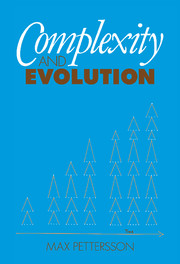Book contents
- Frontmatter
- Contents
- Foreword by Joseph Needham, FRS
- Preface
- Acknowledgements
- 1 Natural and other hierarchies
- 2 Major integrative levels
- 3 Some logarithmic forms of display
- 4 Physical range of integrated natural entities
- 5 Biological range of integrated natural entities (first part)
- 6 Biological range of integrated natural entities (second part)
- 7 Social range of integrated natural entities
- 8 Human societies (first part)
- 9 Human societies (second part)
- 10 Acceleration in evolution
- 11 Further allied accelerations
- 12 Aspects of number
- 13 Aspects of mass
- 14 Positive skewness
- 15 Quantitative conclusions
- Bibliography
- Index
4 - Physical range of integrated natural entities
Published online by Cambridge University Press: 18 January 2010
- Frontmatter
- Contents
- Foreword by Joseph Needham, FRS
- Preface
- Acknowledgements
- 1 Natural and other hierarchies
- 2 Major integrative levels
- 3 Some logarithmic forms of display
- 4 Physical range of integrated natural entities
- 5 Biological range of integrated natural entities (first part)
- 6 Biological range of integrated natural entities (second part)
- 7 Social range of integrated natural entities
- 8 Human societies (first part)
- 9 Human societies (second part)
- 10 Acceleration in evolution
- 11 Further allied accelerations
- 12 Aspects of number
- 13 Aspects of mass
- 14 Positive skewness
- 15 Quantitative conclusions
- Bibliography
- Index
Summary
Introduction
As indicated in Chapter 1, the first three major integrative levels are those of fundamental particles, atoms and molecules. These constitute the physical range of integrated natural entities.
A hydrogen atom consists of two fundamental particles. Most of any atom's mass resides in its small central nucleus. The nucleus of a hydrogen atom consists of a single proton. This has a positive electrical charge, which counterbalances the negative charge of the electron which circles or orbits around the nucleus (Fig. 4.1a). Each atom of the other chemical elements has more than one electron orbiting the centre. And apart from hydrogen atoms, the central nucleus of all normal atoms contains two or more protons together with two or more neutrons. Neutrons have a mass similar to that of protons, but they are electrically neutral, hence their name.
When a sunbeam enters a room one can speak of the arrival of electromagnetic waves, of such and such wavelength and frequency. Or alternatively one can speak of tiny particles streaming in, which have been given the name photons. In some contexts photons are not classed as fundamental particles, but in our new classification photons are definitely regarded as members of Level 1; so it is convenient here also to regard them as fundamental particles. Physicists sometimes regard photons as having no weight or mass; or no mass when not moving. But when moving, as in a beam of light, each photon does have a mass which can be calculated from knowing the wavelength or frequency of the light concerned.
Information
- Type
- Chapter
- Information
- Complexity and Evolution , pp. 26 - 39Publisher: Cambridge University PressPrint publication year: 1996
